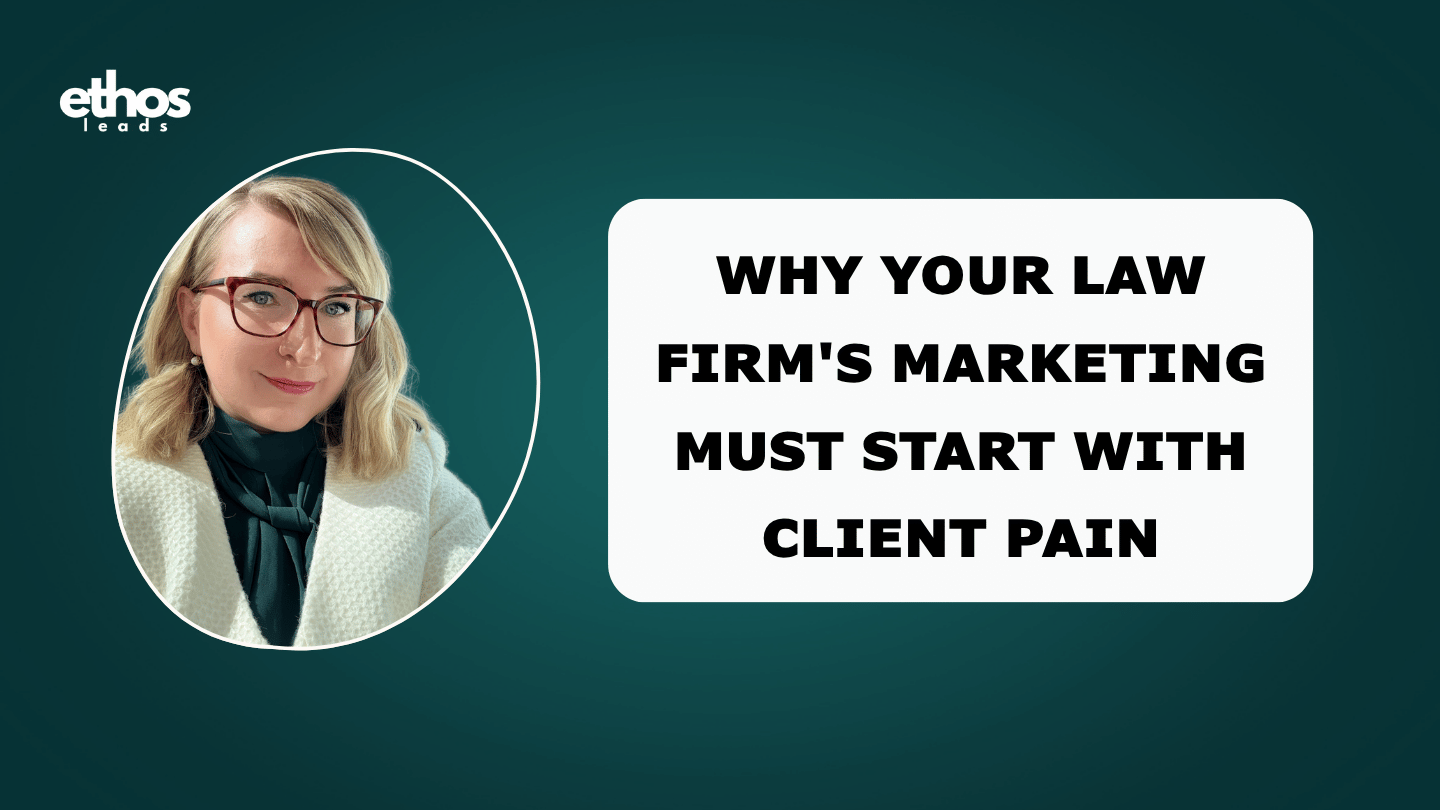Law Firm Marketing Budget: Why It’s Essential and How to Get It Right
The Hard Truth About Law Firm Marketing
Many lawyers, perhaps even you, view marketing as an unnecessary expense. After all, your reputation and word-of-mouth referrals have always been enough, right?
However, successful law firms understand that having a smart marketing budget is crucial for growth.
A marketing budget helps you:
- Stay competitive
- Attract better clients
- Build a strong online presence
- Measure and improve your returns on investment (ROI)
The Risks of Not Having a Marketing Budget
Not investing in marketing can lead to lost chances and slow growth. Without a clear plan, your firm might fall behind competitors who are actively promoting themselves online. A good marketing budget helps you grow, attract more clients, and build a strong reputation.
If you don’t invest enough in marketing, you might face:
- Falling behind competitors who are investing in digital marketing
- Missed opportunities to connect with potential clients
- Difficulty attracting new talent
- Slow growth and revenue
Why Your Law Firm Needs a Marketing Budget
Creating a marketing budget is the first step toward growth. It shows your commitment to your firm’s future. Once you set a budget, it becomes easier to maintain consistent marketing efforts, which is where real growth happens.
A well-planned marketing budget helps your law firm achieve important goals like:
1. Attracting Higher-Quality Clients
With a strategic marketing budget, you can focus on attracting the types of clients that align with your firm's strengths and goals. This targeted approach leads to:
- More profitable cases
- Better client-attorney relationships
- Increased job satisfaction for your team
By investing in marketing that speaks directly to your ideal clients, you're more likely to attract cases that are not only financially rewarding but also professionally fulfilling.
2. Building a Strong Brand Reputation
A consistent and well-executed marketing strategy helps build trust and credibility for your firm. This includes:
- Developing a professional website
- Creating informative content
- Engaging with your audience on social media
- Gathering positive reviews and testimonials
These efforts contribute to a strong brand reputation, making potential clients more likely to choose your firm over competitors.
3. Using Data-Driven Insights
Marketing tools and platforms provide valuable data that can inform your decision-making process. By allocating budget to these tools, you can:
- Track the performance of your marketing campaigns
- Understand your audience's behavior and preferences
- Identify which strategies are delivering the best ROI
This data-driven approach allows you to refine your marketing efforts continually, ensuring that every dollar spent contributes to your firm's growth.
4. Expanding Your Reach and Visibility
A well-funded marketing strategy enables you to expand your firm's reach beyond traditional word-of-mouth referrals. This includes:
- Implementing SEO strategies to improve your online visibility
- Running targeted PPC campaigns to reach potential clients actively searching for legal services
- Engaging in content marketing to establish thought leadership in your practice areas
By casting a wider net, you increase the chances of attracting clients who might not have found your firm through traditional channels.
5. Adapting to Changing Market Conditions
The legal industry, like any other, is subject to changes and trends. A flexible marketing budget allows you to:
- Quickly adapt to new marketing channels and technologies
- Respond to shifts in client behavior or preferences
- Stay ahead of emerging trends in legal marketing
This agility ensures that your firm remains relevant and competitive, even as the market evolves.
How to Calculate Your Law Firm's Marketing Budget: A Data-Driven Approach
Determining the right marketing budget for your law firm can be challenging. Many firms struggle to find the sweet spot between investing enough to drive growth and maintaining profitability.
Here is a data-driven method to calculate a marketing budget tailored to your firm's specific financial metrics.
Step 1. Calculate Average Case Value (ACV)
The first step is understanding how much revenue each case typically generates. To calculate your Average Case Value:
ACV = Total Revenue Per Month / Number of Cases Per Month
Example:
If your firm generates $100,000 per month and handles 20 cases per month, your average case value will be $5,000:
ACV = $100,000 / 20 = $5,000
Step 2. Determine Client Lifetime Value (LTV)
Next, consider how much revenue a client generates over their entire relationship with your firm. If clients typically have multiple cases, multiply your ACV by the average number of cases per client:
LTV = ACV × Average Number of Cases per Client
Example:
If ACV is $5,000, average client has 2 cases:
LTV = $5,000 × 2 = $10,000
Step 3. Calculate Customer Acquisition Cost (CAC)
Now, let's look at how much you're spending to acquire new clients:
CAC = Total Sales and Marketing Expenses / Number of New Clients Acquired
Example:
If your total marketing and sales spend is $10,000 and you acquire 5 new clients:
CAC = 10,000 / 5 = $2,000
Step 4. Determine Your LTV:CAC Ratio
LTV:CAC Ratio: A measure of the value generated from a client relative to the cost of acquiring that client.
This ratio helps you understand the efficiency of your client acquisition efforts:
LTV:CAC Ratio = LTV / CAC
Example:
If LTV is $10,000 and CAC is $2,000:
LTV:CAC Ratio = 10,000 / 2,000 = 5
This means for every $1 spent on acquiring a client, the firm generates $5 in revenue.
For Legal Services industry, the benchmark LTV:CAC ratio is 4.5:1.
This means that for every dollar spent on acquiring a customer, law firms typically see a return of $4.50. This ratio indicates a profitable acquisition strategy, as a ratio closer to 3:1 or higher is generally considered strong across industries. However, a significantly higher ratio might suggest underinvestment in marketing, potentially missing opportunities for growth.
Step 5. Set a CAC Target Based on Desired LTV:CAC Ratio
To optimize your marketing spend, set a target CAC based on your desired LTV:CAC ratio:
CAC Target = LTV / Desired LTV:CAC Ratio
Example:
If LTV is $10,000 and the desired LTV:CAC ratio is 5:1:
CAC Target = 10,000 / 5 = $2,000
Step 6. Calculate Your Marketing Budget
A marketing budget is a financial plan that outlines the amount of money allocated for marketing and advertising efforts over a specific period, typically a month, quarter, or year. This budget covers a range of activities aimed at attracting new clients, retaining existing ones, and promoting the law firm's services.
Formula:
Marketing Budget = (LTV / Target LTV:CAC Ratio) * Number of Desired New Clients
Example:
- LTV (Lifetime Value) = $10,000
- Target LTV:CAC ratio = 5:1
- Number of Desired New Clients = 10
Marketing Budget = (10,000 / 5) * 10 = $20,000
Interpretation:
Based on an LTV of $10,000 per client, a target LTV:CAC ratio of 5:1, and a goal of acquiring 10 new clients, the law firm should allocate a marketing budget of $20,000.
This budget allows for spending up to $2,000 to acquire each new client while maintaining the desired 5:1 ratio between the lifetime value of a client and the cost to acquire them.
Putting It All Together
By following this method, you've determined that your firm can allocate $20,000 per month to marketing while maintaining profitability. This data-driven approach ensures your marketing budget aligns with your firm's financial realities and growth goals.
These calculations should be revisited regularly as your firm grows and market conditions change. By consistently analyzing these metrics, you can fine-tune your marketing budget to maximize ROI and drive sustainable growth for your law firm.
Summary of Steps to Calculate Your Law Firm's Marketing Budget
1. Calculate Average Case Value (ACV)
Determine how much revenue each case generates by dividing your total monthly revenue by the number of cases you handle each month.
2. Determine Client Lifetime Value (LTV)
Assess the total revenue a client brings over their entire relationship with your firm. This involves considering how many cases an average client engages with.
3. Calculate Customer Acquisition Cost (CAC)
Evaluate how much you spend on marketing and sales to acquire new clients by dividing your total marketing expenses by the number of new clients gained.
4. Determine LTV:CAC Ratio
Analyze the efficiency of your client acquisition efforts by comparing the lifetime value of a client to the cost of acquiring them. A healthy ratio indicates effective spending.
5. Set a CAC Target
Establish a target for your customer acquisition cost based on your desired LTV:CAC ratio to optimize your marketing investments.
6. Calculate Your Marketing Budget
Finally, determine the overall marketing budget needed to reach your client acquisition goals while ensuring that your spending aligns with your financial targets.
This structured approach helps you create a marketing budget that supports growth while maintaining profitability for your law firm.
The Power of Consistency
Marketing isn't a one-time effort. Consistent, sustained marketing efforts yield the best results over time. By allocating a dedicated budget, you ensure that your marketing efforts remain consistent, even during slower periods.
Balancing Ethics and Effectiveness
As attorneys, you have a unique responsibility. You’re not just selling a product; you’re providing a crucial service that can significantly impact people's lives. That's why it's essential to balance effective marketing with ethical considerations.
Your marketing budget should include resources for ensuring all campaigns comply with legal advertising regulations in your jurisdiction. But beyond that, it should focus on building trust and demonstrating your expertise.
Invest in Your Future
A well-structured marketing budget is not just an expense; it's an investment in your law firm's future. By allocating resources strategically, you can increase your visibility, attract high-quality clients, and achieve sustainable growth. The key is not just spending more but spending wisely.




